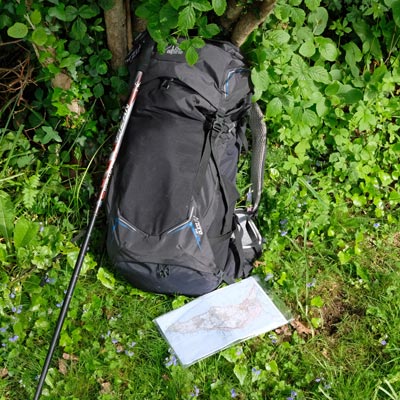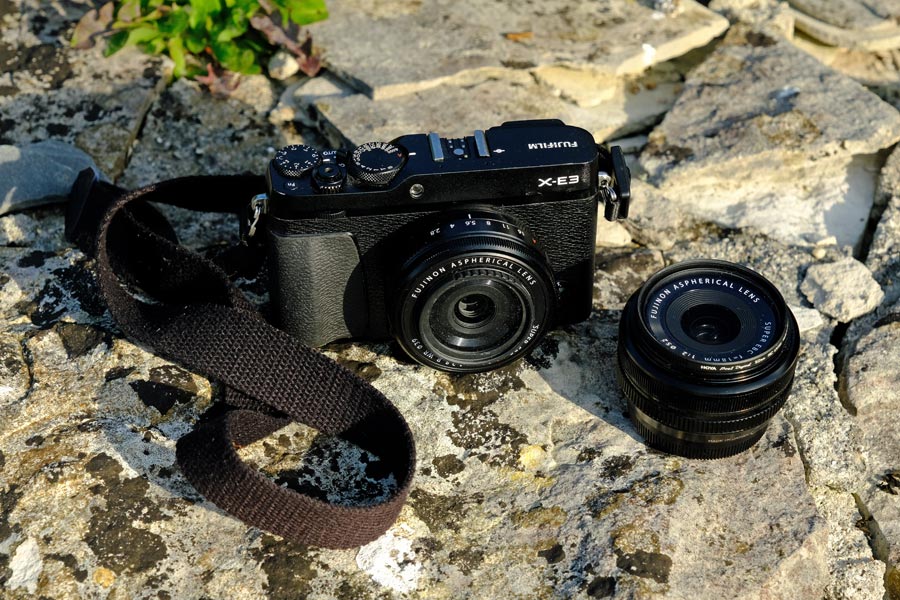
What I learned while walking - (Including a warning about ticks.)
Don't get lost.
"Just keep the sea on your right-hand-side and you can't go wrong" someone said as I was starting to walk the South West Coast Path from Minehead. If only it was that easy. I used good guide books which had small maps of the coastline in them, but I still managed to miss the path several times and had to back-track. That was in 1999. Phones with map apps didn't exist then. This second time I am walking in the other direction and am keeping the sea on my left-hand-side, but I have learned a lot about walking since 1999.

I have a subscription to Ordnance Survey Maps which gives me on-screen access to all OS maps and the ability to print any part of them at home. So I often print A4-size 1:25k-scale copies of my route. Normally a days walk will fit onto one or two pages if printed double-sided. On long walks I put the maps for each day into a thin plastic sleeve, the type used to file papers in a ring-binder, and fold it small enough to fit into my pocket so as to be easily accessible.
I can also use the OS Maps app on my phone and I can also download a map in advance just in case there is no decent phone signal. If there is a signal I can also check my exact location.
What I learned: Not to convince myself that the route is so obvious that there is no need to check a map.
Before you start, stop.
After having a lunch break and then walking a mile before realising that I no longer had my cap with me, causing an extra 2 miles of walking to retrieve it, I learned to always check that I had not left anything behind after stopping for a rest or a snack. Now I say to myself "before you start - stop," to remind me to stop and look around before resuming the walk. I also make it a habit to stop regularly and turn round to look back, in case I may have missed a good view or the chance of a good photograph.
Traveling light.
When out for the day I usually take a 35 litre rucksack. It's a nice size and doesn't get in the way too much when on a bus, in a small shop, or in a pub. On a long trek I will take a 55 litre pack. I used to take a one-man tent, sleeping bag and sleeping mat for use when I didn't find or didn't need accommodation, but nowadays I prefer to take a bivvy bag, sleeping bag and sleeping mat.
What I learned: To pay a little extra and get the lightest and best sleeping gear available (for a sensible price).
Clothing.
I tend to wear walking clothing such as trousers, shorts, tops and base layers made with polyester based 'wicking' type fabrics, as unlike cotton, they do not soak up and retain moisture. Then, when staying at accommodation, it is possible to wash dirty or smelly items at the end of the day knowing that they will be dry by the morning. Also, if it is warm, and there is a light shower, there is no need to stop and get the wet weather gear out as it will only be a short while before the clothes become dry again.
Similarly with outer-garments for cold or wet weather, it pays to buy clothing that was designed for the job. They call it 'technical' clothing and they charge more for it.
What I learned: I pay up and don't skimp on clothing if I want to be more comfortable.
Having said that, I sometimes find that the wet-weather outer-garments that use breathable fabrics such as Gore-Tex can still be too warm for me when I am walking. So I have learned to carry a small fold-out umbrella in my pack for use on such occasions, providing the wind is not too strong.

Feet.
I wear Scarpa Cyrus GTX mid-height boots for the tougher walks and Cyrus GTX Shoes for the easier walks. Being of the same construction, apart from the ankle height, means that my feet are completely used to the fit of both.
What I learned: To wear one pair of socks and keep a second pair in my pack. When I stop for a rest I often take my boots off. If my socks are damp I take them off and let them dry. Or if I don't have time to do that, I put my second pair on and hang the damp ones on my pack using a large kilt-pin so that they dry out as I walk. Wet skin can get soft and become more liable to rub and blister.
Trekking poles.
I always carry at least one pole when walking. Usually two if steep climbing and descending is involved. I found them to be very handy for several reasons: Three legs are more stable than two, and four legs are even better, especially in mud or on slippery rocks; Cars don't get so close to you in country lanes if your pole is pointing out into the road a little; Brambles and stinging nettles can be broken down before you get to them by a well aimed swipe with the sharp tip of a pole.
I find that two poles make steep hill climbing much easier when my arms are taking part of the load. Similarly they take the pressure off my knees when going downhill. Plus they can prevent the dreaded 'going-downhill-out-of-control' situation from happening. When the going is easy I prefer not to use them, so I collapse them and stow them horizontally in the gap produced by the air-space webbing of my rucksack, where I can quickly pull them out again when needed.
Photography.

I may not remember everywhere that I have been and everything that I have seen but it all comes back when I look at my photos. For most people, a smartphone is the easiest way to take a photo, but I always take a proper camera with me when I am walking. They are superior when the conditions are less than ideal because they are so versatile. A good digital camera will have a rear screen and also a separate electronic viewfinder which can be used when it gets too bright to see the rear screen properly due to reflections.
I use a Fujifilm mirrorless interchangeable-lens camera, small enough and light enough to be slipped into a belt-mounted case, a rucksack side pocket or a jacket pocket, so that it is always ready for use. I use it mostly fitted with a wide angle lens for views or a slightly longer lens for other subjects.
If you are interested in amateur photography, you might like to visit my website at martynpearce.com.
Ticks.

I always carry a tick remover in my rucksack. Removal must be done properly so as not to leave mouth-parts embedded in the skin. I like to wear shorts when walking so I always check for ticks regularly. I have had to remove a couple over the years, but once I missed one.
After a walking trip I found one attached high up on the back of my leg, much higher than I had checked. It must have been there for at least a day, maybe more, because after finishing my walk I had taken a long bus ride followed by a longer train ride, followed by a car ride, then a shower and a good nights sleep. So the little devil had hung on through all of that.
Knowing that some ticks can carry Lyme Disease I kept a careful check on the little red spot. About two weeks later it had started to spread and become a small red area and then a large red patch, then a very large raised circular patch. These are early physical signs of Lyme Disease. I contacted my doctor and was instantly put on a three week course of strong antibiotics.
Lyme Disease can cause all sorts of health problems. Sometimes there are no visible signs but there may be other symptoms like headaches, feverishness and tiredness at the time. If untreated, a person can later become seriously ill with all sorts of complications, sometimes not until years later.
The tick was just 3mm long. The tiny red spot became a swelling 10cm (4 inches) wide. There was no itchiness or pain. You have been warned!